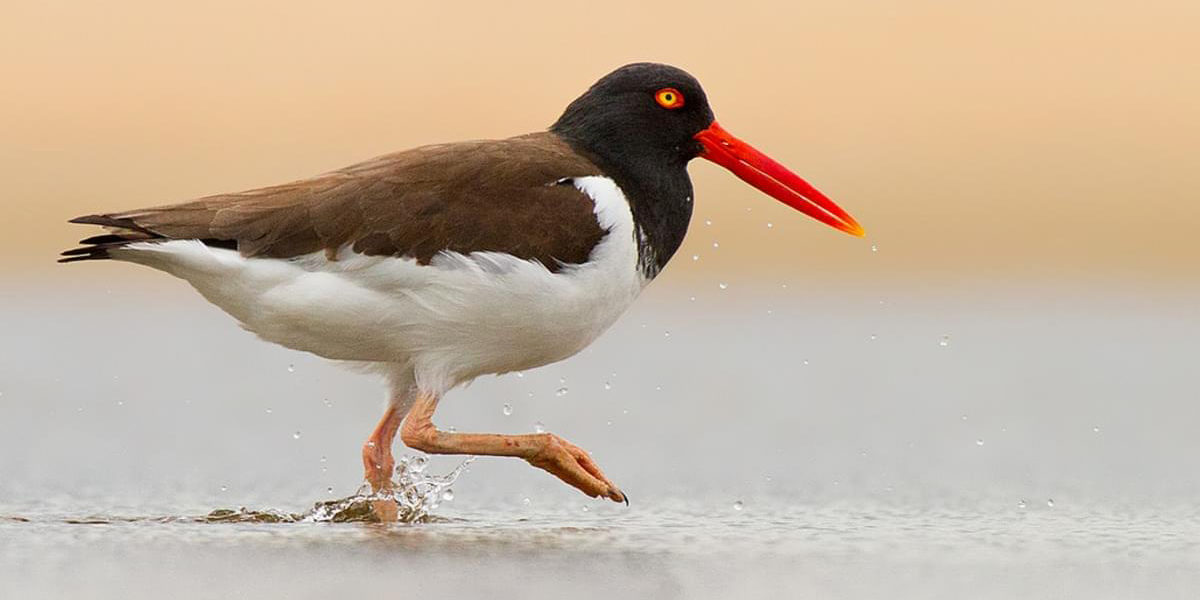Bird of The Week: American Oystercatcher
SCIENTIFIC NAME: Haematopus palliatus
POPULATION: 43,000
TREND: Stable
HABITAT: Nests primarily on sand and shell beaches, dunes, and salt marshes. Winters along both coasts
The flashy American Oystercatcher was once known as the “sea pie,” but it was renamed in 1731 when naturalist Mark Catesby observed the bird eating oysters. This is one of the few bird species that specializes in feeding on saltwater mollusks.
The oystercatcher opens mollusks by stabbing its flat bill into partially open shells and severing the muscles that hold the shell together, allowing the bird to eat the soft inner parts. The bird also uses its bill to hammer a mollusk’s shell until it cracks.
Oystercatcher Threats
Major threats to American Oystercatchers include habitat loss from coastal development and human disturbance. Pollution, disease, and invasive species, which destroy food sources, also take a toll.
In addition, sea level rise, which can eliminate small islands used for nesting and roosting, poses a threat to the species.
Scrapes on the Shore
The shorebirds’ nests are shallow scrapes on sandy or rocky ground along the shore. Although oystercatcher eggs are well camouflaged, they are vulnerable to predation by raccoons, coyotes, skunks, gulls, crows, rats, and foxes.
Chicks can run within 24 hours of hatching; however, it takes up to 60 days for their beaks to become strong enough to pry open bivalves, so they rely on their parents to feed them for their first few weeks.
Oystercatchers are typically short-distance migrants. Breeding birds from South Carolina to Florida generally do not migrate, but will leave breeding territories to join local roosting flocks during the non-breeding season.
Sharing the Beach
American Oystercatchers were nearly hunted to extinction in the 19th century for their plumage and eggs, but populations recovered well after passage of the Migratory Bird Treaty Act in 1918. (Note: The MBTA that protects oystercatchers and other migratory birds is now under threat: take action here.)
The North American population is included on the 2014 State of the Birds Watch List, and several states consider it a species of concern.
LOCAL NOTE: The oystercatcher found along our coastline is the Black oystercatcher. A few years ago the Morro Bay Bird Festival’s t-shirt had the American oystercatcher on it, instead of the black one.
Source: American Bird Conservancy (abcbirds.org)


